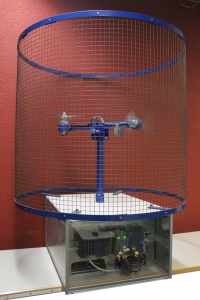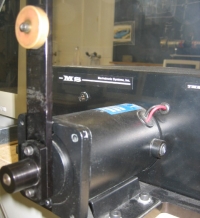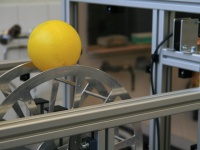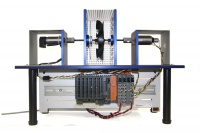Difference between revisions of "Experiments"
Akarapetyan (talk | contribs) |
Akarapetyan (talk | contribs) |
||
| Line 69: | Line 69: | ||
[[media:Stateflow_tutorial.pdf|Stateflow Tutorial]] | [[media:Stateflow_tutorial.pdf|Stateflow Tutorial]] | ||
}} | }} | ||
| − | -- | + | --> |
Revision as of 11:00, 7 September 2021
Experiments in the Autumn Semester
On this page you will find short descriptions of every experiment we offer. You can also download the manuals and necessary files for your homework preparation from here.
Registration: Please register for experiments on the D-ITET online registration website.
1.4 Helicopter I - Fuzzy Logic
Use fuzzy logic to create a controller for a model helicopter. Take advantage of the human friendly, rule based technique to control any system that is difficult to describe mathematically. Ignore the internal structure of the model (Black Box), instead control the helicopter by only studying the behavior of the inputs and the outputs. Simulink will be used to develop the fuzzy controller.
Prerequisites
Basics of feedback control, in particular:
- The idea of feedback (RS1 §§ 4.1-3; weeks 3-4)
Homework
Preparation time approx 1.5 hrs, see Manual.
Place
Downloads
1.9 Ranger - Inverted Pendulum
Ranger is a pendulum system with one degree of freedom. Get to know the basic properties of a PID controller on this simple, yet highly dynamic system. A graphical user interface will guide you step-by-step through the process. Learn more about topics like the Nyquist-criterion, dead-time and crossover frequencies. Be careful though, Ranger can get nasty if your controller is unstable!
This is an experiment supervised by IDSC and only available on Friday
Prerequisites
- PID (RS1 § 4.4; week 4)
- Lead-Lag Compensator
Homework
Preparation time approx 2 hrs, see Manual.
Place
Downloads
1.10 Ball on Wheel
This experiment consists of a wheel that is actuated by an electric motor. A ball has to be balanced on top of it whereby the position of the ball is measured by a laser sensor. You design two controllers to stabilize the ball and allow for reference tracking of the wheel's speed: The first controller consists of two cascaded SISO-loops whereas the second controller is a MIMO-controller.
This is an experiment supervised by IDSC and only available on Friday
Prerequisites
- Basics of linear system theory (RS1 §§ 2.5, 3.1, 16.2; weeks 2-3, 10-11)
- LQG/LTR (RS1 § 17.9; week 13)
Homework
Preparation time approx 2 hrs, see Manual.
Place
Downloads
2.4 Speed Control - Ziegler-Nichols (PID)
Design and analyze a P-, PI- and PID controller for speed control of a DC motor drive. You will develop a model of the system in Matlab, which you can use afterwards to visualize step responses of the plant. The design of the controller follows the Ziegler-Nichols tuning rules. Validate the model by applying a reference step to both the model and the system. Since the control action is limited (i.e. the current you may feed to the motor), you will observe windup effects in the closed-loop systems. This is a very common situation for real plants.
Prerequisites
- Basics of PID control (RS1 §§ 4.4, 5; week 4)
Homework
Preparation time approx 1.5 hrs, see Manual.
Place
Downloads
2.7 Air Ball
In this experiment the height of a ball suspended in an air tube will be controlled. A fan at the bottom of the tube causes upward airflow that pushes the ball up to counteract the downward force of gravity. The fan speed can be controlled to change the air stream velocity, causing a change in ball height. A PID controller will be designed to follow reference trajectories of the ball height and reject disturbances. You will learn the basics of PID control and understand the effects of changing the controller gains.
Prerequisites
- none
Homework
Preparation time approx 1 hrs, see Manual.
Place
Downloads




